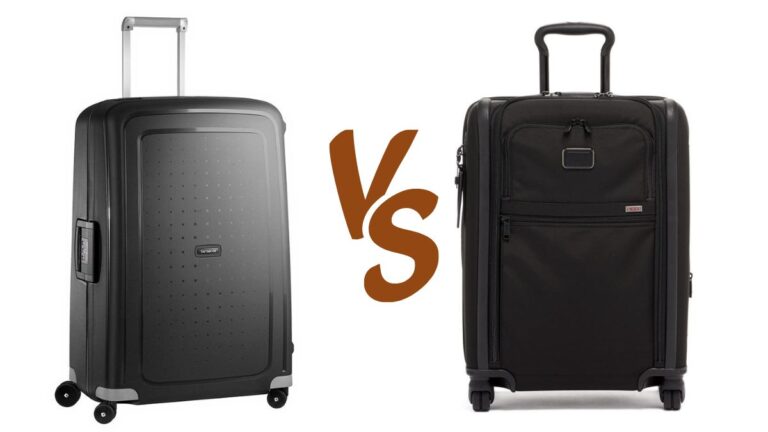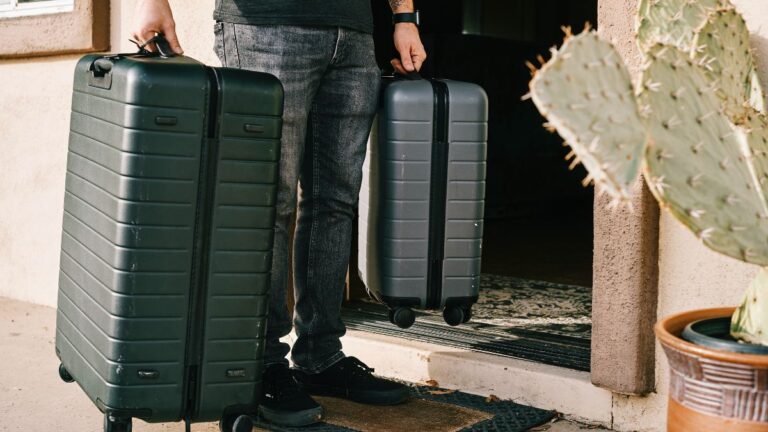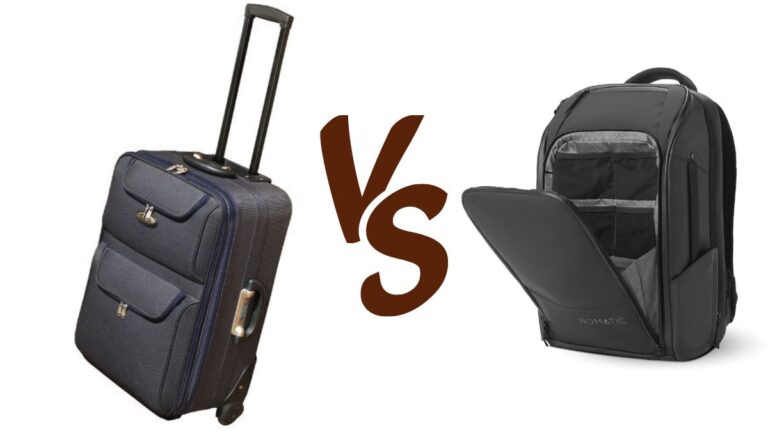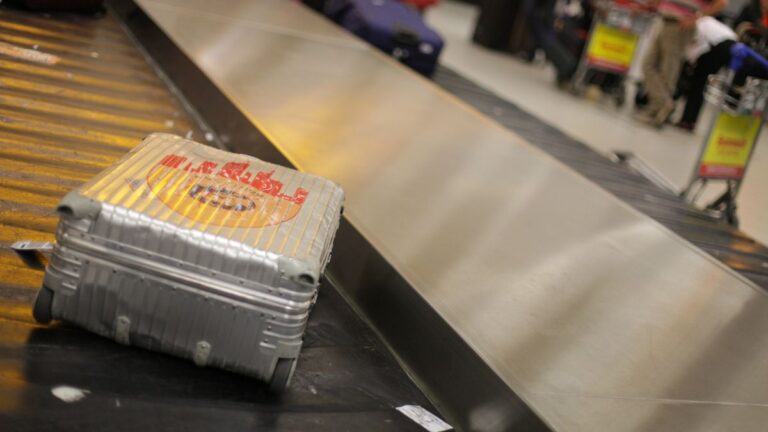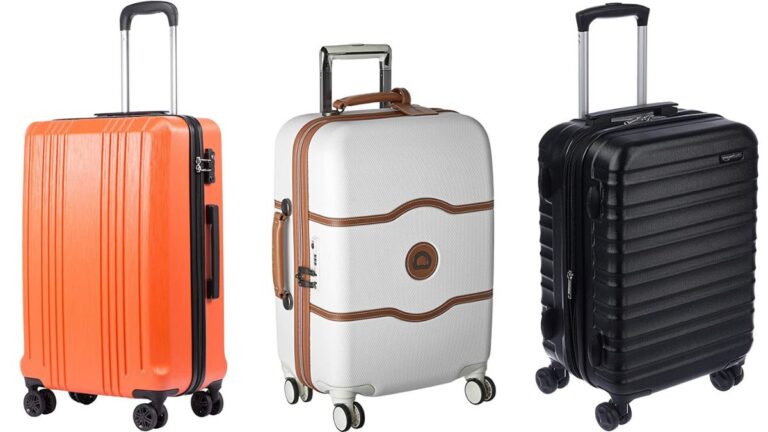What To Do With Old Luggage? Can You Donate It & Where?
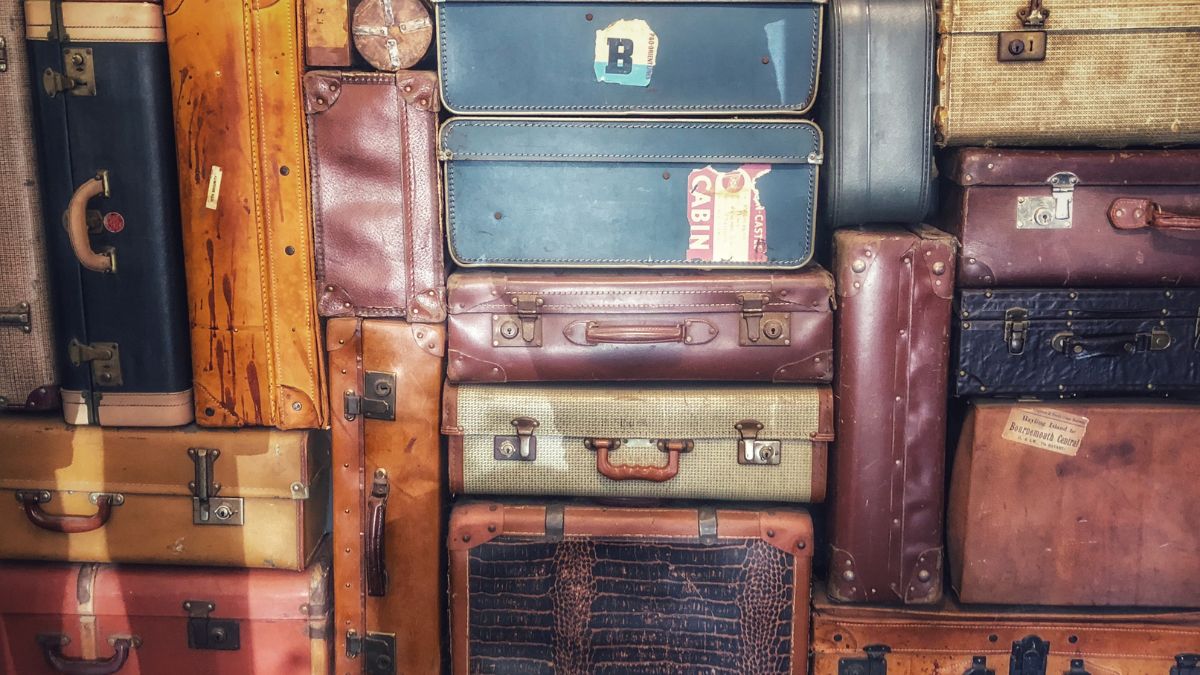
As participants in Amazon Associates and other programs, we earn from qualifying purchases. This comes at no additional cost to you. For more details, see our Affiliate Disclosure.
Has your faithful luggage served you well through countless journeys but is now gathering dust in a corner? As we upgrade to newer, shinier travel companions, we’re often left wondering, what to do with our old luggage? Your outdated suitcases and travel bags may not have a place in your life anymore, but they could be valuable to someone else. Whether you choose to donate it, repurpose it, or even sell it, your old luggage can find a new lease on life instead of ending up in a landfill.
In this article, we’ll explore the various ways you can deal with your old luggage and the places where it can be donated, making it easier for you to decide the best path for you and your retired travel buddy.
Assessing the Condition of Your Luggage
Before deciding what to do with your old luggage, it’s crucial to evaluate its condition. Not all luggage is created equal, and the wear and tear from past travels can significantly affect its future usability.
Check for Functionality: Start by inspecting zippers, handles, wheels, and locks. These are the critical functional elements of any piece of luggage. If they are broken or extremely worn out, the bag may not be suitable for donation. Also, check for structural integrity – your bag should be able to stand upright and hold its shape.
Inspect for Damage: Look for obvious signs of damage such as tears, holes, broken seams, or heavily worn areas. While minor cosmetic damage is acceptable, substantial damage might render the luggage unusable.
Assess the Interior: Open your suitcase and inspect the interior. Check for stains, smells, or other signs of damage like torn lining or broken internal compartments. If your luggage is clean and in good condition inside, it has higher chances of being accepted for donation.
If your luggage fails the above checks, don’t worry. It might still be salvageable for other purposes, such as upcycling or parts reuse. Remember, the goal is to prevent unnecessary waste and give your old luggage a new purpose.
Cleaning and Preparing Your Old Luggage for Donation
Once you’ve assessed the condition of your old luggage and deemed it suitable for donation, it’s time to give it a good clean. This step is crucial as it ensures your luggage is ready for its next owner and respectful to those who receive it. Here’s a simple guide to preparing your old luggage for donation:
Empty the Luggage: Check all compartments, pockets, and crevices of your luggage to make sure it’s completely empty. It’s surprisingly easy to overlook old travel tags, forgotten items, or personal information in hidden pockets.
Vacuum Inside: Use a handheld vacuum cleaner or a vacuum cleaner attachment to remove dust, crumbs, or any other small debris from the inside of your luggage.
Clean the Interior: Depending on the material, you can use a mild soap or upholstery cleaner to clean the inside of your luggage. Use a soft cloth or sponge to avoid damaging the material. Make sure to spot clean any stains.
Wipe Down the Exterior: For hard shell suitcases, a wipe down with a damp cloth and mild detergent should be enough. For fabric suitcases, use a fabric cleaner and a soft brush to gently scrub away dirt or stains.
Treat Leather Carefully: If your luggage is made of leather, use a specialized leather cleaner and conditioner. Always test a small, inconspicuous area first to ensure the product doesn’t discolor or damage the leather.
Dry Thoroughly: This is crucial to prevent mold or mildew. Leave the luggage open in a well-ventilated area until it’s completely dry.
Check for Smells: Sometimes, luggage can retain odors from past trips. If your luggage has a persistent smell, consider using baking soda or a specialized odor remover.
The key is to ensure that your old luggage looks and smells as clean as possible. This not only improves its chances of being accepted for donation, but also allows it to serve its new owner well.
Where Can You Donate Old Luggage?
There are many places and organizations where you can donate your old luggage, allowing it to serve a purpose for those in need. Here are a few options:
Thrift Stores: Shops like Goodwill and The Salvation Army often accept luggage donations. These items are then resold at a lower price, providing affordable options for those who need them.
Homeless Shelters: Homeless shelters often need luggage to distribute to their residents. A suitcase can serve as a secure place for a homeless person to store their belongings.
Foster Care Organizations: Children in foster care often move between homes with their belongings in trash bags. Donating your old luggage to foster care organizations can help provide these children with a more dignified and practical solution for transporting their possessions.
Refugee Centers: Refugee centers often have a high demand for luggage, especially for families who are starting over in a new country and need to transport their belongings.
Local Schools and Community Centers: Some schools and community centers accept luggage donations for programs such as study abroad or community service trips.
Charitable Organizations: Some organizations, like Suitcases for Kids and Luggage of Love, specifically collect and distribute luggage for children in need.
It’s always a good idea to call ahead and check if your chosen organization is currently accepting luggage donations. Some may have specific requirements or may not have the capacity to accept donations at all times.
Selling Your Old Luggage: When and Where
There may be instances when your old luggage is too valuable to simply donate, or perhaps you’d like to recoup some of the initial investment. In such cases, selling your old luggage can be a great option. Here’s a brief guide on when and where to sell your old luggage:
When to Sell: The best time to sell your old luggage is when it’s still in good condition, with all functional parts working well. High-end brands or vintage pieces are often sought after and can fetch a good price.
Online Marketplaces: Websites like eBay, Craigslist, and Facebook Marketplace can be excellent platforms to sell used luggage. Here, you can set your price and negotiate with potential buyers.
Consignment Stores: These stores sell your items for you and take a percentage of the sales price as a fee. This is a great option if you have high-end luggage that can fetch a good price.
Garage Sales: The old-fashioned garage sale is still a viable option. It’s especially useful if you have other items to sell, making it worth your while to set up shop for a day.
Apps for Second-hand Goods: Apps like Letgo, Poshmark, and OfferUp are designed specifically for the resale of used goods, including luggage.
Vintage or Specialty Stores: If your luggage is vintage or from a special collection, a specialty store might be interested. They may buy it from you outright or offer a consignment deal.
Pawn Shops: This can be a fast way to sell your luggage, especially if it’s a high-end brand. However, pawn shops are typically going to pay less than you might make from a private sale.
Remember to thoroughly clean your luggage and take high-quality photos from multiple angles when selling. Honest descriptions about the condition of your luggage will help avoid disputes and returns.
Repurposing Old Luggage: Creative DIY Ideas
If your old luggage isn’t suitable for donation or sale, or if you’re simply feeling crafty, repurposing or upcycling it can be a fun and sustainable option. Here are some creative DIY ideas:
1. A Stylish Storage Solution: Old suitcases can make charming storage units. Stack them for an antique side table that doubles as storage, or use them to store out-of-season clothes or keepsakes.
2. Pet Beds: With some soft padding and attractive fabric, a suitcase can be transformed into a cozy, vintage-looking bed for your pet.
3. Planters: Hard shell luggage can make interesting planters for your garden. They’re particularly good for succulents and shallow-root plants.
4. Wall Shelves: Mounted on a wall, the top half of a hard-shell suitcase can serve as a quirky, vintage-inspired shelf.
5. A Coffee Table: By adding some legs to a hard-shell suitcase, you can create a unique coffee table with built-in storage.
6. Art Supplies Organizer: The multiple compartments in a suitcase make it perfect for organizing art supplies like paints, brushes, and craft materials.
7. Sewing Kit: Smaller luggage pieces can be converted into portable sewing kits, with compartments for threads, needles, and other sewing essentials.
8. Dollhouses: With some creative interior work, you can transform an old suitcase into a charming, portable dollhouse.
Before you start, ensure your luggage is clean and free from any major damages that could hinder your project. DIY repurposing projects not only give your old luggage a new lease on life, but they also provide you with unique, conversation-starting pieces that no one else will have.
Environmental Impact: The Benefits of Donating vs. Throwing Away
Choosing to donate or repurpose your old luggage instead of simply throwing it away has a profound impact on the environment. Here’s why:
1. Waste Reduction: Each year, tons of luggage end up in landfills, contributing to the growing waste problem. By donating or repurposing, you can directly reduce the amount of waste generated.
2. Conserving Resources: Producing new luggage involves the extraction of raw materials and significant energy consumption during manufacturing. By extending the life of your old luggage, fewer resources are needed to create new products.
3. Reducing Pollution: The manufacturing process of new luggage involves the emission of greenhouse gases, which contribute to climate change. Donating or repurposing your luggage helps curb these emissions by reducing the demand for new luggage.
4. Promoting a Circular Economy: Donating old luggage keeps it in use for longer, thereby promoting a circular economy. This concept focuses on reusing and recycling goods, minimizing waste and environmental impact.
5. Empowering Communities: Donating your luggage can also provide essential resources to underprivileged communities or individuals. It can be an affordable option for those unable to purchase new luggage, offering them a solution and indirectly promoting environmental consciousness.
In essence, making the conscious decision to donate, sell, or repurpose your old luggage rather than throwing it away contributes to environmental sustainability. It’s an easy and effective way to do your part in protecting our planet.
Old Luggage Collection Drives: An Opportunity for Community Service
If you have multiple pieces of luggage to get rid of, or if you’re interested in mobilizing your community for a good cause, organizing an old luggage collection drive can be an excellent way to give back. Here’s how it can be an opportunity for community service:
1. Gathering Resources: Collection drives can amass a significant number of luggage pieces that can be donated to various organizations. This can have a significant impact on local shelters, foster care agencies, or refugee centers.
2. Raising Awareness: Organizing a collection drive also gives you the chance to raise awareness about the importance of repurposing and recycling within your community. It’s a practical, hands-on way to promote sustainable practices.
3. Building Community Spirit: Collection drives can bring your community together for a common cause. They provide an opportunity for neighbors to interact, work together, and strengthen community bonds.
4. Fostering Empathy: For young participants, collection drives can be a powerful way to instill empathy and understanding for less fortunate individuals who may benefit from the donated luggage.
5. Creating Ongoing Impact: If your collection drive is successful, it could potentially become a recurring event in your community. This would create an ongoing positive impact both locally and environmentally.
Planning a collection drive does require organization and outreach, but the benefits can be substantial. It’s an opportunity to make a difference, foster community spirit, and teach younger generations about the importance of giving and recycling.
Important Considerations When Donating Old Luggage
When deciding to donate your old luggage, there are a few important considerations to keep in mind to ensure your contribution is as helpful as possible:
1. Quality: The most important aspect to consider is the condition of your luggage. It should be functional, with working zippers, handles, and wheels, and should be clean and free from major damages.
2. Appropriate Size: Consider the potential use of the luggage. Larger suitcases can be more difficult for certain groups to handle, while small carry-ons may not provide enough space. Aim for medium-sized luggage when possible.
3. Material: Hard-shell suitcases can be more durable and weather-resistant, making them a good choice for donation. However, fabric luggage can be lighter and easier to handle, making it suitable for children or the elderly.
4. Check with the Organization: Different organizations have different needs and restrictions. Always check with the organization before you donate to make sure your donation meets their requirements.
5. Cleanliness: Thoroughly clean your luggage before donation. It should be free from stains, smells, or any personal items.
6. Timing: Some organizations have specific times when they accept donations. Make sure to check ahead to avoid any inconvenience.
The purpose of donating your old luggage is to benefit someone else. Therefore, it’s crucial to ensure your luggage is in a condition that respects the recipient and meets their needs effectively.
Charitable Institutions Accepting Luggage Donations
There are many charitable institutions that gladly accept luggage donations to support those in need. Here’s a selection:
1. Goodwill: Goodwill resells donated items at affordable prices. The proceeds support job training and other services for individuals facing challenges to securing employment.
2. The Salvation Army: The Salvation Army uses proceeds from their thrift stores to fund adult rehabilitation centers, helping those struggling with drugs and alcohol find help.
3. Foster Care Organizations: Local foster care organizations often accept luggage for children who move frequently. Examples include “Together We Rise” and “Suitcases for Kids.”
4. Homeless Shelters: Many local homeless shelters accept luggage donations to provide their residents with a practical solution for storing and carrying personal items.
5. Refugee Aid Groups: Organizations helping refugees, such as the International Rescue Committee or Church World Service, often need luggage donations to assist individuals and families starting anew in a different country.
6. Domestic Violence Shelters: Shelters and service organizations for survivors of domestic violence, such as the National Coalition Against Domestic Violence, sometimes accept luggage donations.
7. Local Schools or Churches: Some schools and churches conduct donation drives for luggage to support community members or specific programs.
Before donating, it’s always important to check with the organization first to confirm their current needs and any specific donation guidelines they might have. Donation is a practical and helpful way to extend the life of your old luggage and make a difference in someone else’s life.
Alternatives to Donations: Swap, Trade, or Recycle
If donation isn’t an option, there are other environmentally friendly and creative ways to part with your old luggage. Here are some alternatives:
1. Swapping or Trading: Swap events are increasingly popular as a way to exchange items you no longer need for something you do. You can organize a local swap meet in your community or participate in online swaps on platforms like Swapz.
2. Recycling: If your luggage is broken beyond repair, consider recycling. Some components of luggage such as metal frames or plastic parts can be recycled. Check with your local recycling facility to understand the possibilities.
3. Luggage Repair Services: If your luggage has minor damages, consider getting it repaired. Many brands offer repair services, or you can turn to local repair shops. This not only extends the life of your luggage but also saves money.
4. Hand It Down: If your luggage is still in good shape, consider handing it down to a family member or friend who could use it.
5. Luggage Trade-In Programs: Some luggage companies have trade-in programs where you can exchange your old luggage for a discount on a new piece. Brands like Briggs & Riley and Eagle Creek have such programs.
6. Art Projects: Artists and art schools may be interested in using your old luggage for art projects or installations. Reach out to local art institutions to see if they could use your luggage.
The goal is to keep your old luggage out of the landfill for as long as possible. Whichever route you choose, you’ll be making a positive impact on the environment.

